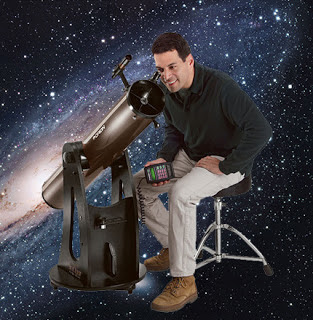Among astronomers, Eclipse Chasers are generally defined as those lucky enough and well-financed enough to travel the globe, placing themselves in the moon’s shadow wherever and whenever it falls. Some witness dozens of these stunning events during a lifetime. Me, well not so much. I’ve witnessed exactly one. Yet I am an “Eclipse Chaser” of a sort, nonetheless.
Dirt roads in the bush of Africa can be notoriously lumpy, carved with ridges, and scalloped with potholes galore. Bouncing around in a safari-style van, we steered from village to village in the Southern corner of Kenya, seeking our quarry of clear skies. No matter the discomfort, though; totality was approaching, and we still could not dodge the thin morning clouds overhead while staying within the predicted path of totality. Our driver, a local called “Eddie” was a native Kikuyu, and knew his way around; we trusted him to make the best guesses at where we would find clear skies. As we quite literally bounced up and down, to and fro, we occasionally stuck our heads out windows, peering through handheld solar filters to get a look at the partial phases. We checked our watches nervously. We needed to pick a site soon.
With perhaps 30 minutes until totality, we skidded to a dusty stop in a remote village and chose a clearing near a sagging and well-worn schoolhouse to set up equipment. Our group ranged in experience from neophytes to experts, and gear ranged from the simple naked eye to plastic-covered Mylar filters to sophisticated astrographs. At 11:19 local time, we experienced what we came to see. It was four-plus minutes of incredible sensation. Observing totality is, well, surreal. Breathtaking, moving, life-changing; all you’ve read about, and more.
As the moon continued past totality and partial phases resumed, the local school kids (perhaps aged six to ten) happily celebrated with us. One of the most memorable experiences of the entire trip was watching these youngsters see the eclipse through a telescope. Invariably, as the view settled in the eyepiece, they would give a shriek of excitement, pull back, laugh uproariously, and begin dancing. What a delight! A dozen or more barefoot, raucous kids running in circles, jumping, laughing, and shrieking joyously. They had just witnessed the unreal, the magical.
You do not have to travel to Kenya or any other exotic locale to see next year’s solar eclipse. If you live in the United States, on August 21, 2017, will find a host of “Eclipse Chasers” heading for the 70-mile wide path of the moon’s shadow as it travels almost diagonally across the U.S., from Oregon to South Carolina. Those outside this path will see the sun partially obscured by the moon, the amount dependent on the observer's distance from the centerline. You can chase this one on modern, four-lane highways. Don’t miss it.
Information on solar eclipses, along with a century’s worth of scheduling can be found on eclipse.gsfc.nasa.gov/
Harry Hammond
Mashpee, MA
Read More
 |
The glow of the Solar Corona During Totality All Photos by Harry Hammond.
|
Dirt roads in the bush of Africa can be notoriously lumpy, carved with ridges, and scalloped with potholes galore. Bouncing around in a safari-style van, we steered from village to village in the Southern corner of Kenya, seeking our quarry of clear skies. No matter the discomfort, though; totality was approaching, and we still could not dodge the thin morning clouds overhead while staying within the predicted path of totality. Our driver, a local called “Eddie” was a native Kikuyu, and knew his way around; we trusted him to make the best guesses at where we would find clear skies. As we quite literally bounced up and down, to and fro, we occasionally stuck our heads out windows, peering through handheld solar filters to get a look at the partial phases. We checked our watches nervously. We needed to pick a site soon.
 |
| Moon Eclipsing the Sun. |
With perhaps 30 minutes until totality, we skidded to a dusty stop in a remote village and chose a clearing near a sagging and well-worn schoolhouse to set up equipment. Our group ranged in experience from neophytes to experts, and gear ranged from the simple naked eye to plastic-covered Mylar filters to sophisticated astrographs. At 11:19 local time, we experienced what we came to see. It was four-plus minutes of incredible sensation. Observing totality is, well, surreal. Breathtaking, moving, life-changing; all you’ve read about, and more.
As the moon continued past totality and partial phases resumed, the local school kids (perhaps aged six to ten) happily celebrated with us. One of the most memorable experiences of the entire trip was watching these youngsters see the eclipse through a telescope. Invariably, as the view settled in the eyepiece, they would give a shriek of excitement, pull back, laugh uproariously, and begin dancing. What a delight! A dozen or more barefoot, raucous kids running in circles, jumping, laughing, and shrieking joyously. They had just witnessed the unreal, the magical.
 |
| Solar Prominences During Totality. |
You do not have to travel to Kenya or any other exotic locale to see next year’s solar eclipse. If you live in the United States, on August 21, 2017, will find a host of “Eclipse Chasers” heading for the 70-mile wide path of the moon’s shadow as it travels almost diagonally across the U.S., from Oregon to South Carolina. Those outside this path will see the sun partially obscured by the moon, the amount dependent on the observer's distance from the centerline. You can chase this one on modern, four-lane highways. Don’t miss it.
Information on solar eclipses, along with a century’s worth of scheduling can be found on eclipse.gsfc.nasa.gov/
Harry Hammond
Mashpee, MA

